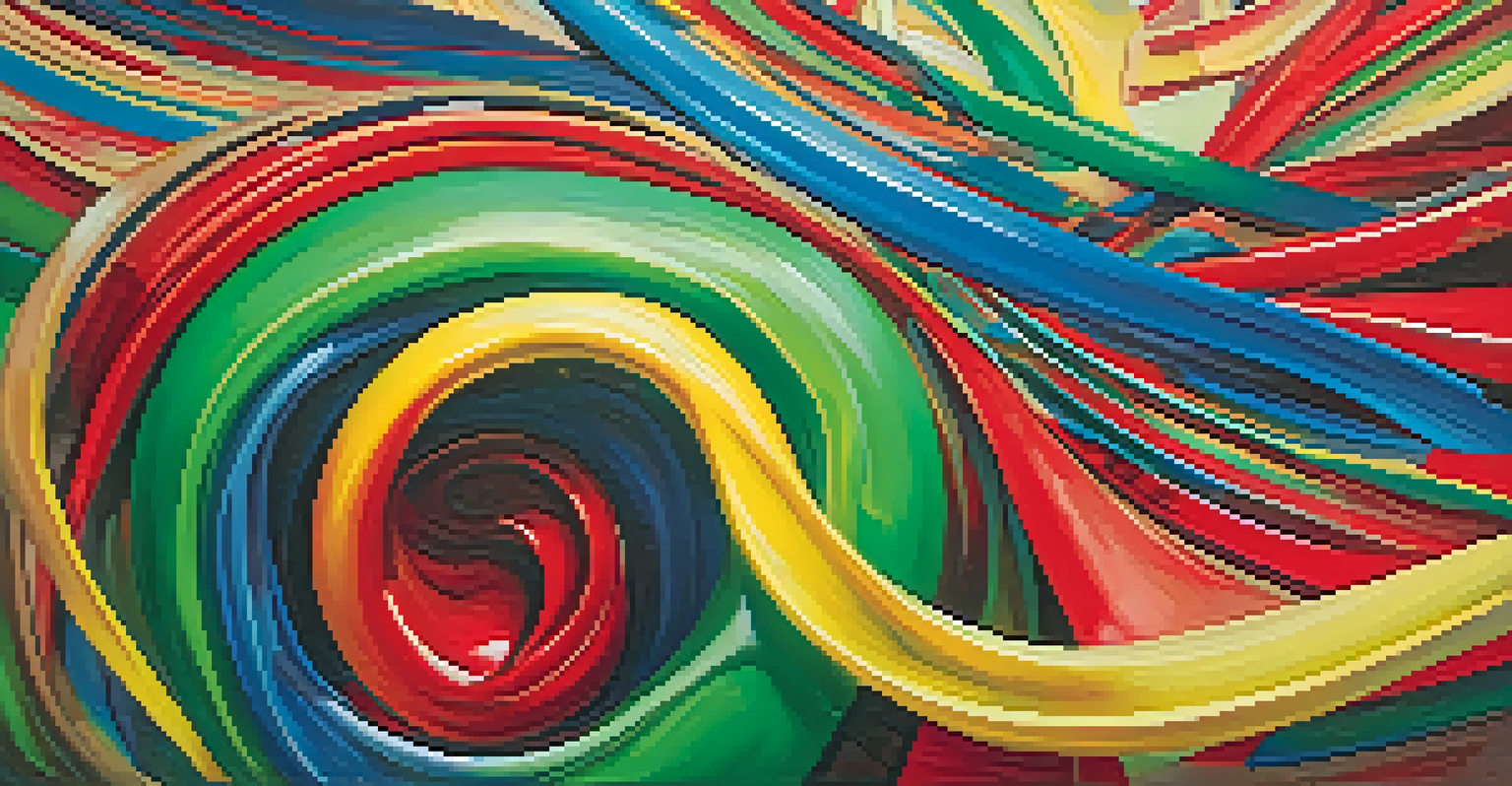Symbolism in Art: Decoding Visual Messages and Meanings

What is Symbolism in Art? An Introduction to Visual Language
Symbolism in art refers to the use of symbols to represent ideas or qualities. Artists often embed deeper meanings in their work, using objects, colors, and forms to convey complex messages. This visual language allows viewers to interpret and connect with the artwork on a more profound level.
Art is the most beautiful of all lies.
For example, a simple image of a dove can symbolize peace, while a skull might represent mortality. Through such symbols, artists invite us to look beyond the surface and explore the emotions or themes they wish to communicate. This adds layers to the viewing experience, encouraging personal interpretation.
Related Resource
Understanding symbolism can enhance our appreciation of art. The next time you look at a painting or sculpture, consider what lies beneath the obvious and how the artist's choices contribute to the overall message.
Common Symbols in Art and Their Meanings
Many symbols recur throughout art history, each carrying its own significance. For instance, red often symbolizes passion or love, while blue can evoke calmness and serenity. Recognizing these common symbols helps us decode the emotional undertones of a piece.

Take, for instance, the use of water in art. It can symbolize life, renewal, or even the passage of time. Artists like Claude Monet often used water to express fleeting moments and the beauty of nature, inviting viewers to reflect on their own experiences with these themes.
Symbolism Deepens Art Appreciation
Understanding symbolism allows viewers to connect more profoundly with artworks by interpreting the deeper meanings behind objects, colors, and forms.
By understanding these symbols, we can better grasp the intentions behind an artist's work. This knowledge enriches our conversations about art and allows for a deeper connection to the pieces we encounter.
Cultural Context: How Culture Shapes Symbolism
Symbols can vary greatly across different cultures, making context crucial in interpretation. What signifies hope in one culture might represent something entirely different in another. This cultural lens shapes our understanding of art and its messages.
Color is the keyboard, the eyes are the harmonies, the soul is the piano with many strings.
For example, in Western art, the color white often symbolizes purity, while in some Eastern cultures, it can represent mourning. Such differences highlight the importance of considering the cultural background of the artist and the audience when analyzing artwork.
Related Resource
Ultimately, acknowledging these cultural nuances allows us to appreciate the richness of symbolism in art. It opens up a dialogue about how diverse perspectives influence the way we perceive and interpret visual messages.
Symbolism in Modern Art: New Interpretations
Modern art has taken symbolism to new heights, challenging traditional interpretations and pushing boundaries. Artists today often use abstract symbols or non-representational forms to provoke thought and elicit emotional responses. This evolution reflects the complexity of contemporary life.
For instance, a piece of modern art might use fragmented shapes to symbolize the chaos of urban living, inviting viewers to reflect on their own experiences in a fast-paced world. These symbols can be open to interpretation, allowing each person to form their own connections.
Cultural Context Shapes Symbols
Cultural differences can significantly alter the meaning of symbols in art, highlighting the importance of context in interpretation.
By engaging with modern symbolic art, we can explore new meanings that resonate with our current realities. This makes the experience of viewing art not only personal but also highly relevant in today's society.
The Role of Color in Symbolism
Color plays a significant role in symbolism, often conveying emotions and setting the tone of a piece. Different colors evoke different feelings, making them powerful tools for artists. Understanding color symbolism can deepen our appreciation of an artwork's impact.
For example, the use of warm colors like red and orange can create a sense of energy or urgency, while cool colors like blue and green tend to evoke calmness and tranquility. Artists carefully select their color palettes to communicate specific feelings or themes.
Related Resource
By exploring the emotional weight of colors in art, we can better understand the messages artists wish to convey. This awareness enhances our viewing experience and allows us to connect more personally with the artwork.
Interpreting Symbolism: Personal Connections and Insights
Interpreting symbolism in art is often a personal journey, shaped by our unique experiences and perspectives. What resonates with one viewer may evoke a completely different response in another. This individuality adds richness to the art experience.
For instance, a viewer might see a tree in a painting and interpret it as a symbol of growth or stability, while another might view it as a reminder of loss or change. These varied interpretations highlight the subjective nature of art appreciation.
Modern Art Expands Symbolic Meaning
Contemporary artists use abstract symbols to challenge traditional interpretations, inviting viewers to form personal connections with modern themes.
Encouraging personal connections with symbolism can foster a deeper engagement with art. The next time you encounter a piece, take a moment to reflect on what the symbols mean to you and how they resonate with your own life experiences.
Conclusion: The Lasting Impact of Symbolism in Art
Symbolism in art serves as a bridge between the artist's intentions and the viewer's interpretations. By decoding these visual messages, we can gain insight into the themes and emotions that shape our understanding of the world. This connection enriches our cultural experience.
As we explore different symbols, colors, and cultural contexts, we uncover layers of meaning that enhance our appreciation of art. The conversation around symbolism fosters a greater understanding of both the artwork and the human experience it reflects.

In conclusion, embracing the symbolism in art allows us to engage more deeply with creative expressions. It invites us to explore our emotions, thoughts, and connections to the world around us, making art an ever-evolving journey.